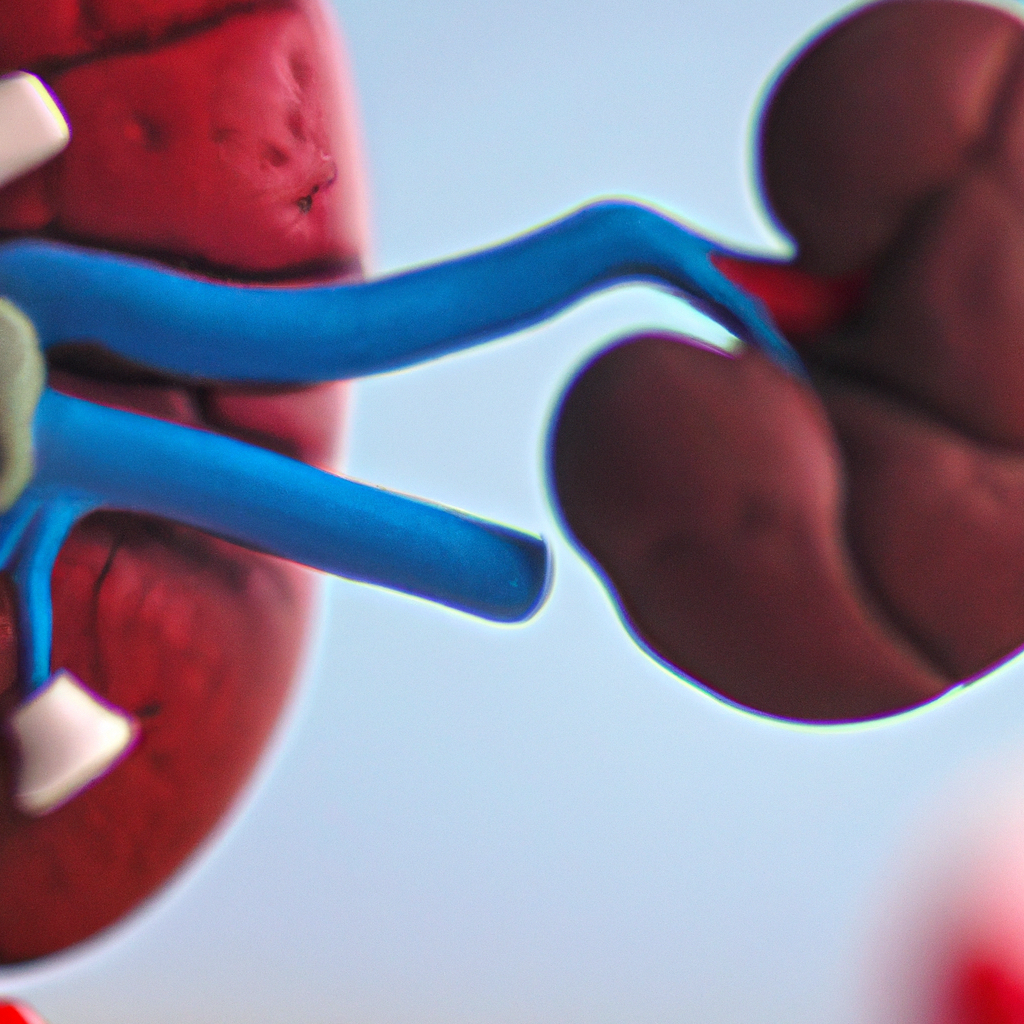The Protective Effects of New Long-Lasting Triple Agonist, HM15275, on Kidney Health in Preclinical Models of Acute and Chronic Kidney Diseases
-
Reading Roadmap
- The Protective Effects of New Long-Lasting Triple Agonist, HM15275, on Kidney Health in Preclinical Models of Acute and Chronic Kidney Diseases
- Key Takeaways
- Introduction: A New Hope for Kidney Disease Treatment
- The Mechanism of HM15275
- Preclinical Evidence of HM15275’s Protective Effects
- The Potential of HM15275 for Kidney Disease Treatment
- FAQ Section
- What is HM15275?
- How does HM15275 work?
- What are the potential benefits of HM15275 for kidney disease treatment?
- Is HM15275 currently available for use in patients?
- What are the next steps for the development of HM15275?
- Conclusion: The Future of Kidney Disease Treatment
- Further Analysis
- Key Takeaways Revisited
The Protective Effects of New Long-Lasting Triple Agonist, HM15275, on Kidney Health in Preclinical Models of Acute and Chronic Kidney Diseases

[youtubomatic_search]
Key Takeaways
- HM15275, a new long-lasting triple agonist, shows promising protective effects on kidney health in preclinical models of acute and chronic kidney diseases.
- HM15275 works by targeting three key receptors involved in kidney function and disease progression.
- Preclinical studies have shown that HM15275 can reduce inflammation, fibrosis, and oxidative stress in the kidneys, all of which are key factors in the progression of kidney disease.
- HM15275 has the potential to provide a new therapeutic approach for the treatment of both acute and chronic kidney diseases.
- Further research is needed to confirm these findings in clinical trials and to fully understand the mechanisms of action of HM15275.
Introduction: A New Hope for Kidney Disease Treatment
Acute and chronic kidney diseases are major global health issues, affecting millions of people worldwide. Despite advances in medical research, effective treatments for these conditions remain limited. However, a new long-lasting triple agonist, HM15275, is showing promising protective effects on kidney health in preclinical models of both acute and chronic kidney diseases.
The Mechanism of HM15275
HM15275 is a novel triple agonist that targets three key receptors involved in kidney function and disease progression: GLP-1, GIP, and glucagon receptors. By simultaneously activating these receptors, HM15275 can potentially modulate multiple pathways involved in kidney disease, providing a comprehensive approach to treatment.
Preclinical Evidence of HM15275’s Protective Effects
Preclinical studies have shown that HM15275 can reduce inflammation, fibrosis, and oxidative stress in the kidneys. These are all key factors in the progression of kidney disease, and their reduction could potentially slow disease progression and improve kidney function. For example, in a study published in the Journal of Pharmacology and Experimental Therapeutics, HM15275 was shown to significantly reduce renal fibrosis and inflammation in a mouse model of chronic kidney disease.
The Potential of HM15275 for Kidney Disease Treatment
The promising results from preclinical studies suggest that HM15275 has the potential to provide a new therapeutic approach for the treatment of both acute and chronic kidney diseases. By targeting multiple pathways involved in kidney disease, HM15275 could potentially offer a more effective and comprehensive treatment than currently available therapies.
FAQ Section
What is HM15275?
HM15275 is a new long-lasting triple agonist that targets three key receptors involved in kidney function and disease progression: GLP-1, GIP, and glucagon receptors.
How does HM15275 work?
By simultaneously activating GLP-1, GIP, and glucagon receptors, HM15275 can potentially modulate multiple pathways involved in kidney disease, providing a comprehensive approach to treatment.
What are the potential benefits of HM15275 for kidney disease treatment?
Preclinical studies have shown that HM15275 can reduce inflammation, fibrosis, and oxidative stress in the kidneys, potentially slowing disease progression and improving kidney function.
Is HM15275 currently available for use in patients?
No, HM15275 is still in the preclinical stage of development. Further research is needed to confirm its efficacy and safety in clinical trials.
What are the next steps for the development of HM15275?
The next steps will involve further preclinical studies to fully understand the mechanisms of action of HM15275, followed by clinical trials to test its efficacy and safety in patients with kidney disease.
Conclusion: The Future of Kidney Disease Treatment
The development of HM15275 represents a promising advance in the field of kidney disease treatment. Its ability to target multiple pathways involved in kidney disease could potentially offer a more effective and comprehensive treatment than currently available therapies. However, further research is needed to confirm these findings in clinical trials and to fully understand the mechanisms of action of HM15275. As we continue to explore the potential of this novel triple agonist, we may be one step closer to a new therapeutic approach for both acute and chronic kidney diseases.
[youtubomatic_search]
Further Analysis
While the preclinical findings are promising, it is important to note that the journey from preclinical development to clinical use is a long and complex one. Many potential drugs show promise in preclinical studies but fail to demonstrate efficacy or safety in clinical trials. Therefore, while HM15275 represents a potential new approach to kidney disease treatment, it is still early days, and much more research is needed before it can be considered for use in patients.
Key Takeaways Revisited
- HM15275, a new long-lasting triple agonist, shows promising protective effects on kidney health in preclinical models of acute and chronic kidney diseases.
- HM15275 works by targeting three key receptors involved in kidney function and disease progression.
- Preclinical studies have shown that HM15275 can reduce inflammation, fibrosis, and oxidative stress in the kidneys, all of which are key factors in the progression of kidney disease.
- HM15275 has the potential to provide a new therapeutic approach for the treatment of both acute and chronic kidney diseases.
- Further research is needed to confirm these findings in clinical trials and to fully understand the mechanisms of action of HM15275.







